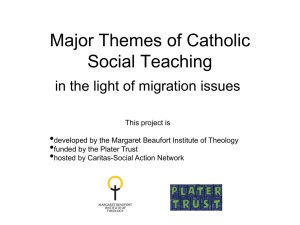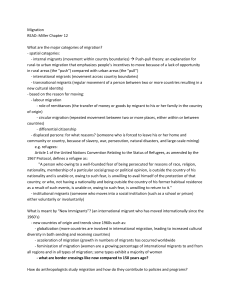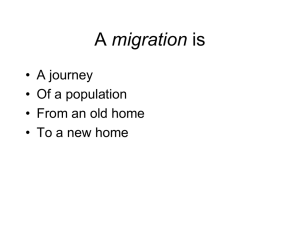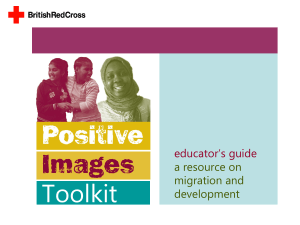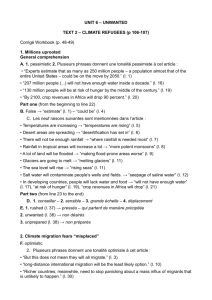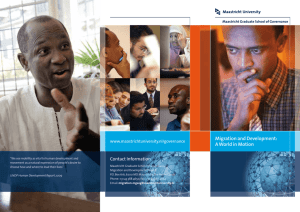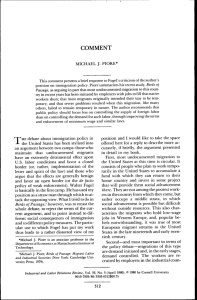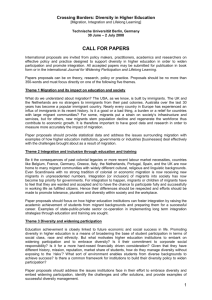Special exam - migration - The University of Texas at Austin
advertisement
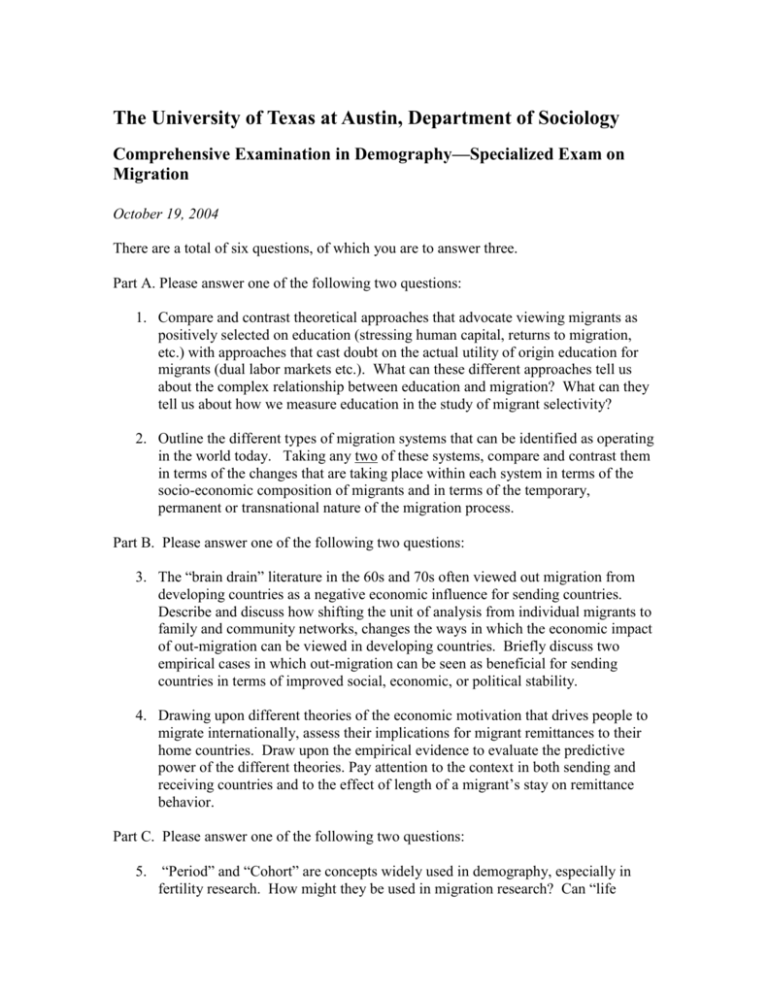
The University of Texas at Austin, Department of Sociology Comprehensive Examination in Demography—Specialized Exam on Migration October 19, 2004 There are a total of six questions, of which you are to answer three. Part A. Please answer one of the following two questions: 1. Compare and contrast theoretical approaches that advocate viewing migrants as positively selected on education (stressing human capital, returns to migration, etc.) with approaches that cast doubt on the actual utility of origin education for migrants (dual labor markets etc.). What can these different approaches tell us about the complex relationship between education and migration? What can they tell us about how we measure education in the study of migrant selectivity? 2. Outline the different types of migration systems that can be identified as operating in the world today. Taking any two of these systems, compare and contrast them in terms of the changes that are taking place within each system in terms of the socio-economic composition of migrants and in terms of the temporary, permanent or transnational nature of the migration process. Part B. Please answer one of the following two questions: 3. The “brain drain” literature in the 60s and 70s often viewed out migration from developing countries as a negative economic influence for sending countries. Describe and discuss how shifting the unit of analysis from individual migrants to family and community networks, changes the ways in which the economic impact of out-migration can be viewed in developing countries. Briefly discuss two empirical cases in which out-migration can be seen as beneficial for sending countries in terms of improved social, economic, or political stability. 4. Drawing upon different theories of the economic motivation that drives people to migrate internationally, assess their implications for migrant remittances to their home countries. Draw upon the empirical evidence to evaluate the predictive power of the different theories. Pay attention to the context in both sending and receiving countries and to the effect of length of a migrant’s stay on remittance behavior. Part C. Please answer one of the following two questions: 5. “Period” and “Cohort” are concepts widely used in demography, especially in fertility research. How might they be used in migration research? Can “life histories” of migration be a relevant tool for research? What might such life histories shed light on that “period” measures of migration might not? What kinds of problems might attend the use of such life histories? Cite some examples of research done using life histories of migration that illustrate the strengths and weaknesses of such an approach. 6. There has been, over the past fifteen to twenty years, been substantial research and writing regarding something that is usually referred to as “the informal economy,” or the “informal labor force.” Indeed, the General Conference of the International Labour Organization (ILO) discussed a report they had done called “Decent Work and the Informal Economy.” How would you define the informal economy? How does it differ from the “formal economy?” What are the key differences in the two? How does the formal/informal distinction affect the job careers of (a) rural-urban migrants and (b) international migrants?
